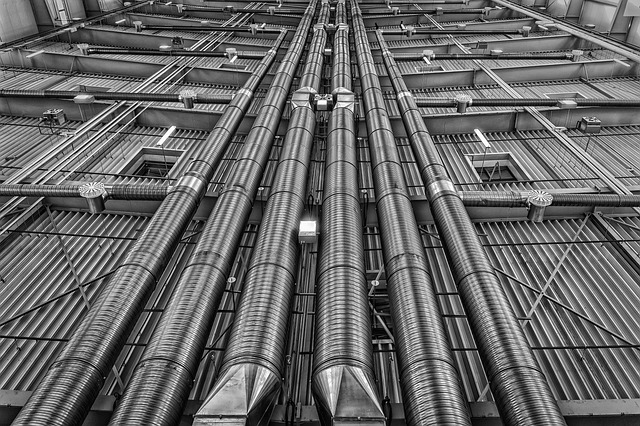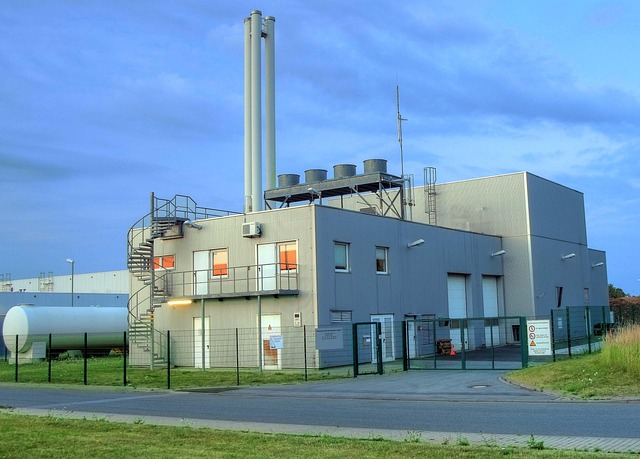Destratification fans are essential for equalizing temperatures in large commercial and industrial spaces, addressing thermal stratification that causes hot spots. These heavy-duty fans enhance HVAC efficiency through continuous air mixing, leading to energy savings, improved comfort, and reduced environmental impact. Key features include robust construction, powerful motors, and customizable controls, suitable for various applications from manufacturing floors to data centers. Proper maintenance ensures optimal performance, longevity, and continued benefits such as efficient temperature control and enhanced indoor air quality.
In today’s industrial landscape, continuous destratification is vital for maintaining optimal working conditions. Heavy-duty destratification fans, designed for round-the-clock operation, play a crucial role in keeping environments cool and comfortable. This article explores the process of destratification, its benefits, and the unique challenges of continuous operation. We delve into key features that define heavy-duty fans, industries they serve, and essential maintenance practices to ensure longevity. Discover how these powerful tools keep air moving efficiently.
- Understanding Destratification: The Process and Its Benefits
- Challenges in Continuous Operation Demands: Heat Management and Airflow Requirements
- Key Features of Heavy-Duty Destratification Fans
- Applications: Industries Benefiting from Continuous Destratification
- Maintenance and Longevity: Ensuring Optimal Performance for Heavy-Duty Fans
Understanding Destratification: The Process and Its Benefits

Destratification, a process that aims to evenly distribute warm or cool air throughout a space, is essential for maintaining optimal temperature control and enhancing HVAC (heating, ventilation, and air conditioning) efficiency. In environments where thermal stratification tends to occur, such as industrial settings or commercial buildings with high ceilings, destrativication fans play a crucial role in mixing the air effectively. These fans are designed to combat the natural tendency of warm air to rise and cool air to sink, ensuring that every corner of the space is comfortably climate-controlled.
By promoting efficient air circulation and warm air redistribution, destrativication fans offer significant advantages, including enhanced energy savings and improved comfort for occupants. In industrial cooling applications, for instance, these fans can help reduce the overall energy consumption by minimizing temperature variations across different zones. This, in turn, leads to a more sustainable and cost-effective indoor environment, making them indispensable tools in modern commercial applications that prioritize both comfort and sustainability.
Challenges in Continuous Operation Demands: Heat Management and Airflow Requirements

Continuous operation demands present unique challenges for heavy-duty destratification fans, particularly in managing heat and maintaining optimal airflow. Destratification fans are designed to combat thermal stratification—the uneven distribution of air temperature within a space—which is often exacerbated by prolonged use. As these fans operate consistently, they must efficiently cool the environment while ensuring adequate air circulation to prevent hot spots and maintain comfortable conditions for occupants.
The need for effective heat management goes hand in hand with maximizing HVAC efficiency, as excessive heating can lead to increased energy consumption. Ceiling-mounted destratification fans play a crucial role in warm air redistribution, mixing cold air from the bottom with warmer air at higher levels, thus creating a more uniform temperature profile across the space. This technology is especially valuable in commercial applications where maintaining a productive and comfortable working environment is essential, allowing for significant energy savings and improved overall comfort without compromising on performance.
Key Features of Heavy-Duty Destratification Fans

Heavy-duty destratification fans are designed to combat thermal stratification, a common issue in large spaces where warm air tends to pool at higher levels, leading to uncomfortable temperature variations. These fans are built for continuous operation, ensuring optimal air circulation and temperature control across every corner of the building. Key features include robust construction, capable of withstanding demanding environments; powerful motors that deliver high air moving capabilities; and advanced air mixing technology to efficiently redistribute warm air, enhancing HVAC efficiency.
Many models offer customizable speed controls, allowing precise adjustments to meet specific cooling needs. Their ceiling mounted design makes them discreet yet effective, suitable for commercial applications and industrial cooling scenarios alike. By promoting even temperature distribution, these fans not only contribute to enhanced comfort but also offer significant energy savings potential, making them a smart choice for facilities managers looking to optimize their building’s thermal stratification management and reduce operational costs.
Applications: Industries Benefiting from Continuous Destratification

In today’s world, many industries are benefiting from the continuous operation of heavy-duty destratification fans, designed to combat thermal stratification and optimize air circulation. These powerful tools are transforming industrial cooling and commercial applications by offering enhanced HVAC efficiency and temperature control. From bustling manufacturing floors to vast warehouse spaces, ceiling-mounted fans equipped with advanced air mixing technology are ensuring even warm air redistribution, thus improving overall energy savings.
The application of destratification fans extends far beyond simple comfort; they play a pivotal role in maintaining optimal working conditions. Industries such as pharmaceuticals, data centers, and agriculture heavily rely on these fans to prevent the buildup of hot spots, which can significantly impact productivity and product quality. By continuously mixing the air, destratification fans contribute to creating a healthier, more comfortable environment, making them indispensable for a wide range of commercial applications.
Maintenance and Longevity: Ensuring Optimal Performance for Heavy-Duty Fans

Maintaining heavy-duty destratification fans for continuous operation is key to ensuring optimal performance and longevity. Regular cleaning and inspection are essential to prevent dust buildup, which can significantly impact air circulation and energy savings. The use of ceiling-mounted fans in commercial applications, such as industrial cooling or HVAC systems, requires a focus on temperature control and warm air redistribution. Advanced air mixing technology not only enhances the efficiency of these fans but also plays a crucial role in maintaining indoor air quality.
Proper maintenance practices include lubricating moving parts, replacing worn-out components promptly, and ensuring the fan’s blades are free from debris. By implementing these measures, destratification fans can provide effective air circulation and temperature control, thereby improving overall HVAC efficiency in both industrial and commercial settings. This not only contributes to a comfortable indoor environment but also offers long-term cost savings through reduced energy consumption.
Heavy-duty destratification fans are indispensable in industries where continuous, efficient airflow is crucial. By understanding the benefits of destratification and addressing heat management challenges, businesses can leverage these fans to maintain optimal working conditions. Key features like robust construction and advanced cooling systems ensure longevity, making them essential investments for sustained productivity. Industries from manufacturing to data centers are witnessing significant improvements in efficiency and air quality thanks to these game-changing destrativication fans. Regular maintenance is the final piece of the puzzle, guaranteeing these powerful tools continue to revolutionize their respective environments.
